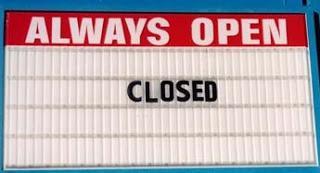
In light of the Irish vote, Alan McCornick argues that it's simplistic to frame the battle for gay rights as a battle between religion and the gays. As he points out, many people of faith are strong advocates for gay people and gay rights. In his view, the dichotomy that deserves attention here is one between closed and open models of church:
The point is there is no foundation for the claim that gays are hostile to "religion." The claim is a category error. A more accurate category line would run between those open to change and those holding fast to tradition for the sake of tradition. The labels commonly applied to these two groups are liberal/progressive and traditional/conservative respectively. As is often the case, the labels fail to capture the full complexity, since both groups wish to conserve some things and change others. I prefer the terms open and closed.
The closed church focuses on who's in and who's out, who are sinners and who are saved. The open church tends to cite the "judge not, lest ye be judged" passage. The closed church is driven to impose law and order (God’s will as they insist they know it); the open church focuses on compassion, mercy, understanding, forgiveness and leaves the punishment, if any is due, to God. The closed church insists those in the open camp are not legitimate believers. The open church bewails the fact that the closed church worships the golden calf of literalism and misses the message of inclusion. The closed church walls itself from error. The open church is by nature ecumenical and seeks to tear walls down.
As Alan points out in a prior statement to which this one links, he writes from the vantage point of a gay man who long since gave up on religion due to the toxic effects of many religious people and religious beliefs on gay lives. But that choice on his part does not, he maintains, blind him to the power religious belief can exert on many people to open minds and hearts — to move in a direction precisely opposite to anti-gay bigotry.
As the vote of a nation with deep Catholic roots and a majority Catholic population recently seems richly to demonstrate . . . .
I find the graphic at a number of blog sites including thinkspace, with no clear indicator of its original source.

